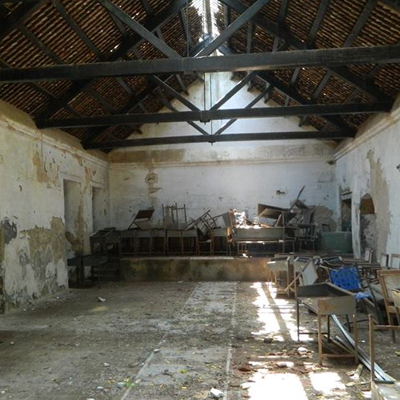Zieganbalg Museum - Tamilnadu

The Ziegenbalg Museum is located in the center of the charming Tamil Nadu seaside town of Tranquebar. This modest structure, which has a view of the blue Bay of Bengal, is home to a wealth of historical and cultural significance. It is evidence of the significant influence Danish missionaries had in South India, especially during the 18th and 19th centuries. One of the first Protestant missionaries to travel to India, Bartholomew’s Ziegenbalg, is honoured in the Ziegenbalg Museum, which documents his life and ministry. Together with Heinrich Plütschau, a comrade, Ziegenbalg arrived in Tranquebar in 1706 and set out to promote education and Christianity throughout the area. Their efforts resulted in the founding of the first Protestant mission in India, the Tranquebar Mission. The museum provides a window into the lives of these trailblazing missionaries by showcasing an intriguing assortment of objects and records that shed light on the mission's early years. Ziegenbalg is a top place to visit in Tamil Nadu as it provides a forum for cross-cultural communication between Christians, Muslims, and Hindus, among other communities. It fosters a broader knowledge of cultural relationships and historical ties by providing visitors with the opportunity to learn about the encounters between European missionaries and Tamil society. The Ziegenbalg Museum offers insightful information on the struggles and triumphs of early Protestant missionaries to history buffs, students, and anyone else with an interest in early missions in India. For visitors of all ages, the collection of artifacts, literature, and models on exhibit provides an extensive educational experience. Admirable in and of itself, the restored heritage cottage has classic colonial architecture and design features. Experience the atmosphere of a bygone era as you explore the displays honoring Ziegenbalg’s ground-breaking contributions to education and printing.
One of the prominent features of visiting the Ziegenbalg Museum that greets guests when they approach the museum is a carefully planned exhibition that covers multiple important areas: The Life and Work of Ziegenbalg: Ziegenbalg’s personal effects, letters, and notebooks are kept in the museum and offer important insights into his life, motivations, and challenges as a missionary in a strange country. His translations of the Bible and other religious writings into Tamil are on display, demonstrating his commitment to advancing knowledge. Initial Mission Tasks: Exhibitions highlighting the Tranquebar Mission's activities in healthcare, education, and religious text translation are available for visitors to view. Images and drawings show the building of hospitals, schools, and churches, illustrating the mission's diverse impact on the neighborhood. Influence of the Colonial Era: The museum explores the socio-cultural effects of the Danish occupation of Tranquebar through the display of objects pertaining to local government, architecture, and trade. Through these exhibits, one can comprehend the intricate interactions between Tamil Nadu's native culture and the Danish colonial influence. The museum also showcases the Tranquebar Mission's lasting legacy by highlighting its contributions to the advancement of social change, healthcare, and education in the area, wanting to promote discussion on the histories of colonization, missions, and indigenous culture that are linked.
One of the main highlights of the Ziegenbalg Museum is that it offers an opportunity to discover the quaint town of Tranquebar. Beautiful vistas may be seen from the museum's beachfront setting, and nearby streets are lined with churches, historical sites, and buildings from the colonial era. Once a thriving trading center, Tranquebar still has a distinct blend of European and Tamil influences. Its streets are replete with vestiges of the past, from the lively street markets to the placid churches, all of which silently attest to the blending of civilizations.
The Ziegenbalg Museum is proof of the Danish missionaries' lasting influence on Tamil Nadu. It provides an insightful look at a crucial period in the history of the area and illustrates the intricate relationship between colonial influence, religious fervor, and cross-cultural interchange. The Ziegenbalg Museum offers a tremendously enriching experience for people who wish to learn more about Tamil Nadu's rich cultural tapestry through its historical relics and moving exhibitions.
Timing:
10 AM to 4 PM. Fridays are closed.
Ways to Reach Ooty Museum:
By Air: The museum is located approximately 165.3 km from Tiruchirappalli International Airport.
By Rail: The museum is located 31.8 km from the Mayiladuthurai Railway Station. To go to the museum, you can take public transportation from the train station or hail a cab or taxi.
By Road: Mayiladuthurai has excellent road connectivity. To get to the museum, you can take public transportation, private vehicles, or taxi services.